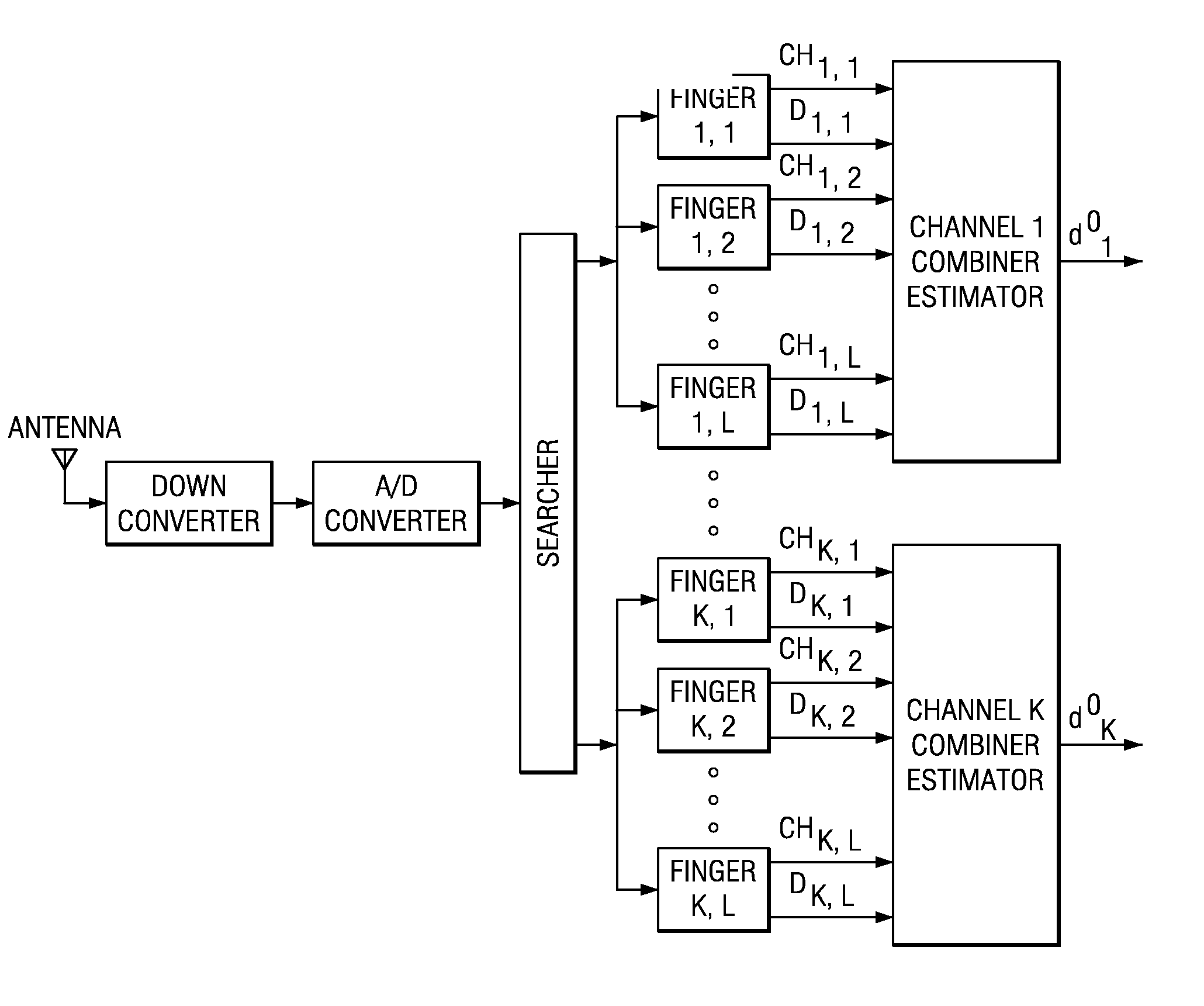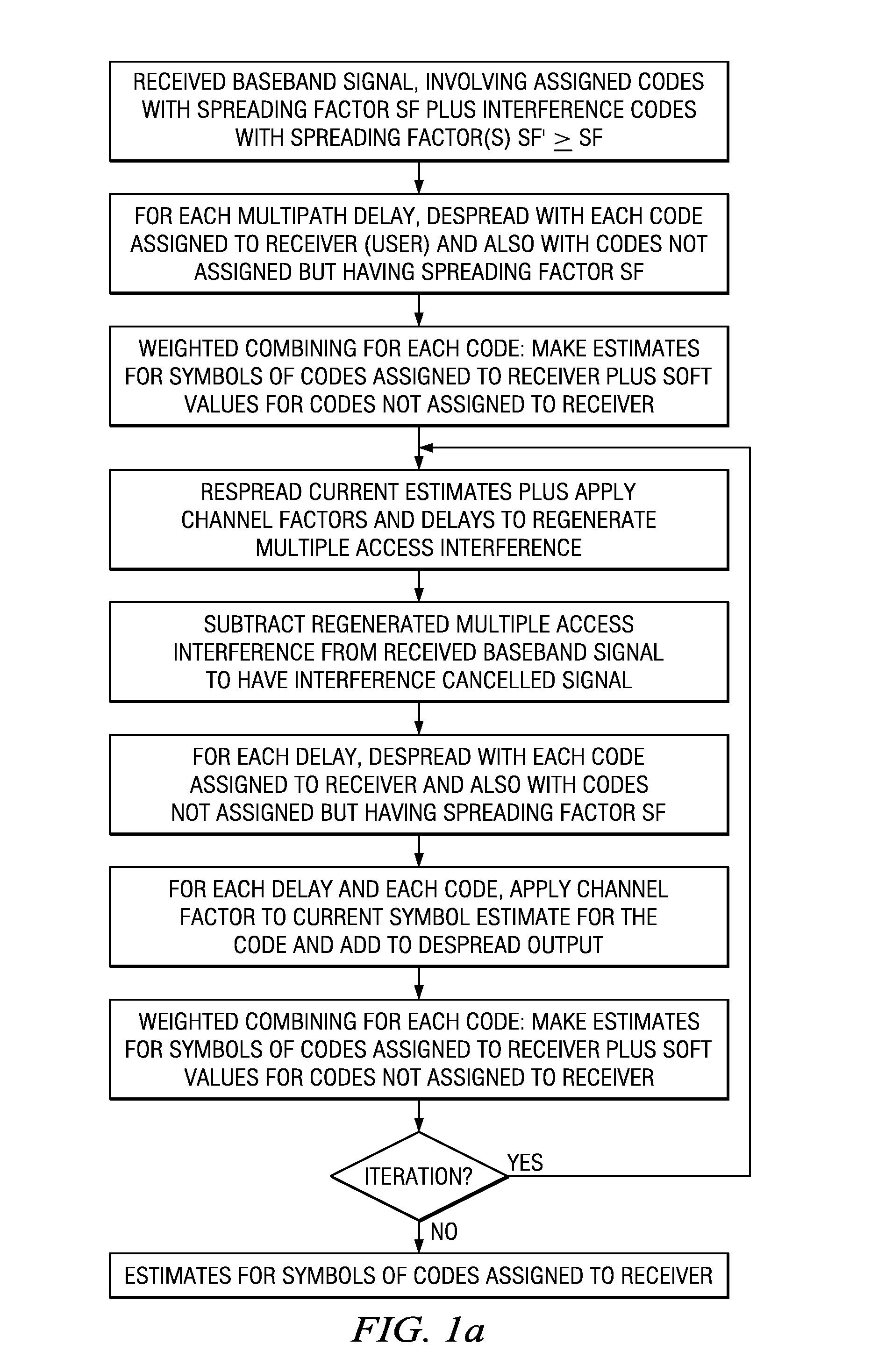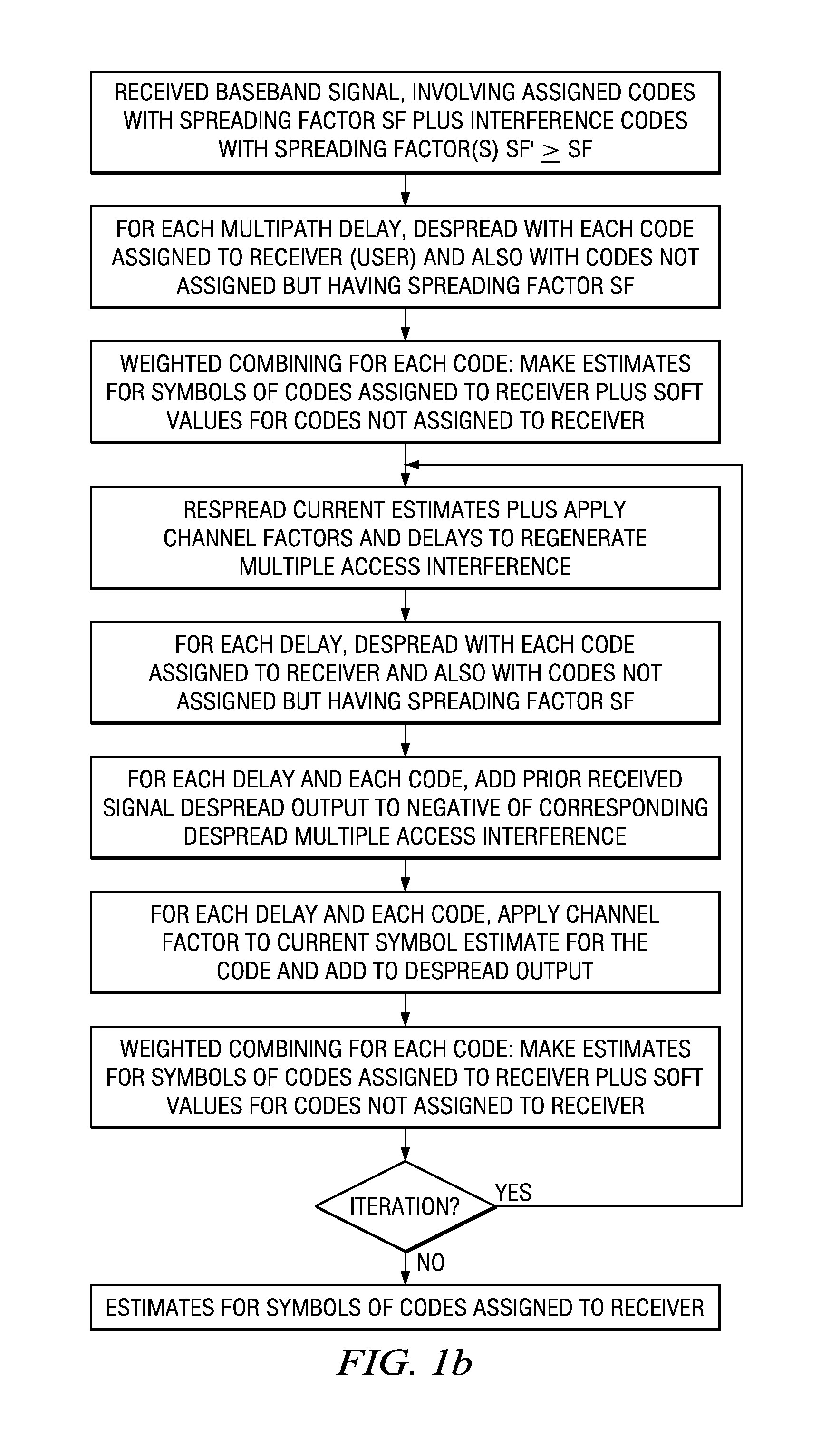Interference cancellation system and method
- Summary
- Abstract
- Description
- Claims
- Application Information
AI Technical Summary
Benefits of technology
Problems solved by technology
Method used
Image
Examples
Embodiment Construction
1. Overview
[0014]FIGS. 1a–1b are flow diagrams for preferred embodiment interference cancellation methods for a user; the methods detect fixed spreading factor codes (both assigned and not assigned to the user) to cancel multiple access interference (MAI) of other users including those with same or higher spreading factor codes in the code tree (see FIG. 7). For the interference arising from same or higher spreading factor codes, the regenerated multiple access interference may use soft values since the power of the corresponding signals is assumed to be unknown to the user / receiver of interest.
[0015]FIGS. 2–6 show functional blocks of preferred embodiment receivers. FIG. 2 illustrates a generic receiver for K codes with L multipaths for each code; the CHi,j are channel coefficient factor estimates and the Di,j are the despread and synchronized outputs; for the downlink the channel coefficients for a given multipath (delay) are the same for each code. That is, tracking and despreadi...
PUM
 Login to View More
Login to View More Abstract
Description
Claims
Application Information
 Login to View More
Login to View More - R&D
- Intellectual Property
- Life Sciences
- Materials
- Tech Scout
- Unparalleled Data Quality
- Higher Quality Content
- 60% Fewer Hallucinations
Browse by: Latest US Patents, China's latest patents, Technical Efficacy Thesaurus, Application Domain, Technology Topic, Popular Technical Reports.
© 2025 PatSnap. All rights reserved.Legal|Privacy policy|Modern Slavery Act Transparency Statement|Sitemap|About US| Contact US: help@patsnap.com



